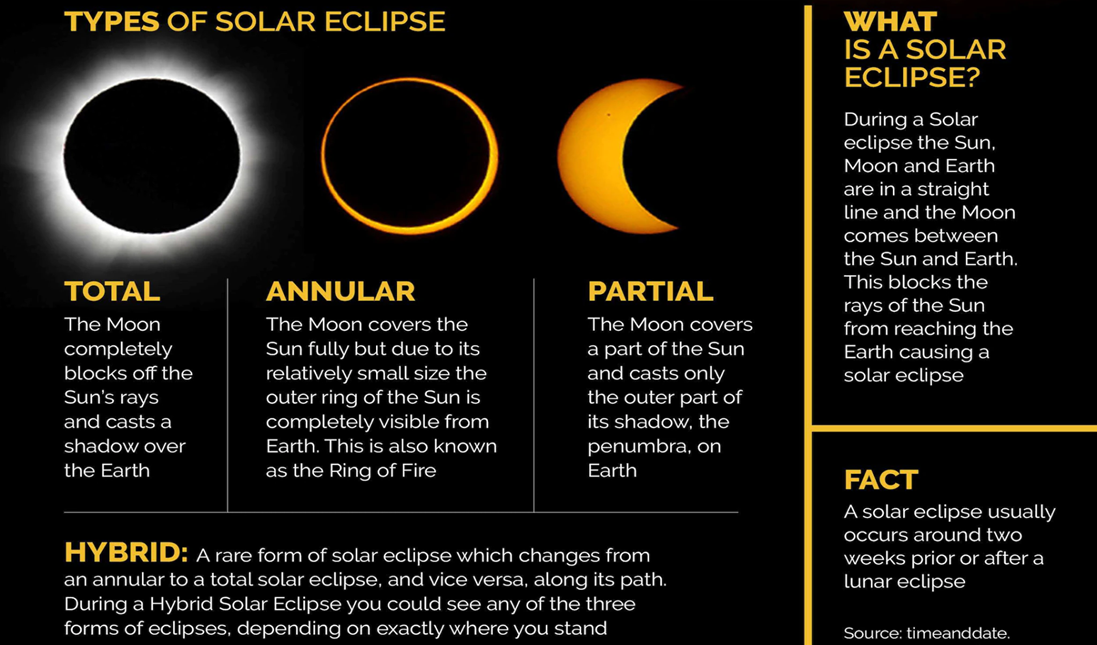- Courses
- GS Full Course 1 Year
- GS Full Course 2 Year
- GS Full Course 3 Year
- GS Full Course Till Selection
- Answer Alpha: Mains 2025 Mentorship
- MEP (Mains Enrichment Programme) Data, Facts
- Essay Target – 150+ Marks
- Online Program
- GS Recorded Course
- Polity
- Geography
- Economy
- Ancient, Medieval and Art & Culture AMAC
- Modern India, Post Independence & World History
- Environment
- Governance
- Science & Technology
- International Relations and Internal Security
- Disaster Management
- Ethics
- NCERT Current Affairs
- Indian Society and Social Issue
- NCERT- Science and Technology
- NCERT - Geography
- NCERT - Ancient History
- NCERT- World History
- NCERT Modern History
- CSAT
- 5 LAYERED ARJUNA Mentorship
- Public Administration Optional
- ABOUT US
- OUR TOPPERS
- TEST SERIES
- FREE STUDY MATERIAL
- VIDEOS
- CONTACT US
TOTAL SOLAR ECLIPSE: A CELESTIAL EVENT
TOTAL SOLAR ECLIPSE: A CELESTIAL EVENT
On Monday, April 8, 2024, parts of the US went dark as viewers from Dallas to Canada. Total solar eclipse was witnessed across North America, surprising observers in Mexico, the United States and Canada.
Understanding Solar Eclipse:
- Definition: A solar eclipse occurs when the Moon comes between the Earth and the Sun, preventing sunlight from reaching some parts of the Earth. Total solar eclipses is the one where the Moon completely covers the Sun's disk, causing temporary darkness.

Types of Solar Eclipses |
|
|
Total Solar Eclipse: |
During a total solar eclipse, the Moon's alignment with the Sun and Earth allows it to completely block the Sun's disk. Totality, a temporary blackout, occurs in areas where the Moon's shadow falls centrally. |
|
Annular Solar Eclipse: |
In an annular solar eclipse, the Moon passes directly between the Earth and the Sun but not close enough to completely cover the Sun's disk. Instead, a ring of sunlight is visible around the moon's edges, creating a "ring of fire" effect. |
|
Partial Solar Eclipse: |
A partial solar eclipse happens when the Moon passes between the Sun and Earth but the Sun, Moon, and Earth are not perfectly lined up. Only a part of the Sun will appear to be covered. |
|
Hybrid Solar Eclipse: |
A hybrid solar eclipse, also known as an annular-total eclipse, is a rare type that transitions between an annular eclipse and a total solar eclipse along its path. Observers in different locations along the eclipse path may experience either an annular or a total eclipse. |
Significance of Total Solar Eclipses:
- Rare Occurrence: Total solar eclipses are relatively rare events, with certain locations on Earth experiencing them only once in several centuries or even millennia.
- Scientific Importance: Solar eclipses provide valuable opportunities for scientists to study various aspects of the Sun, including its corona and magnetic field.
- Cultural and Historical Relevance: For many cultures throughout history, Solar eclipses have had religious, mythological, and astronomical significance, often influencing calendars, rituals, and beliefs.
Solar Eclipses: Frequency and Magnitude |
|
|
Frequency: |
Eclipse Magnitude: |
|
|
Must Check: Best IAS Coaching In Delhi



